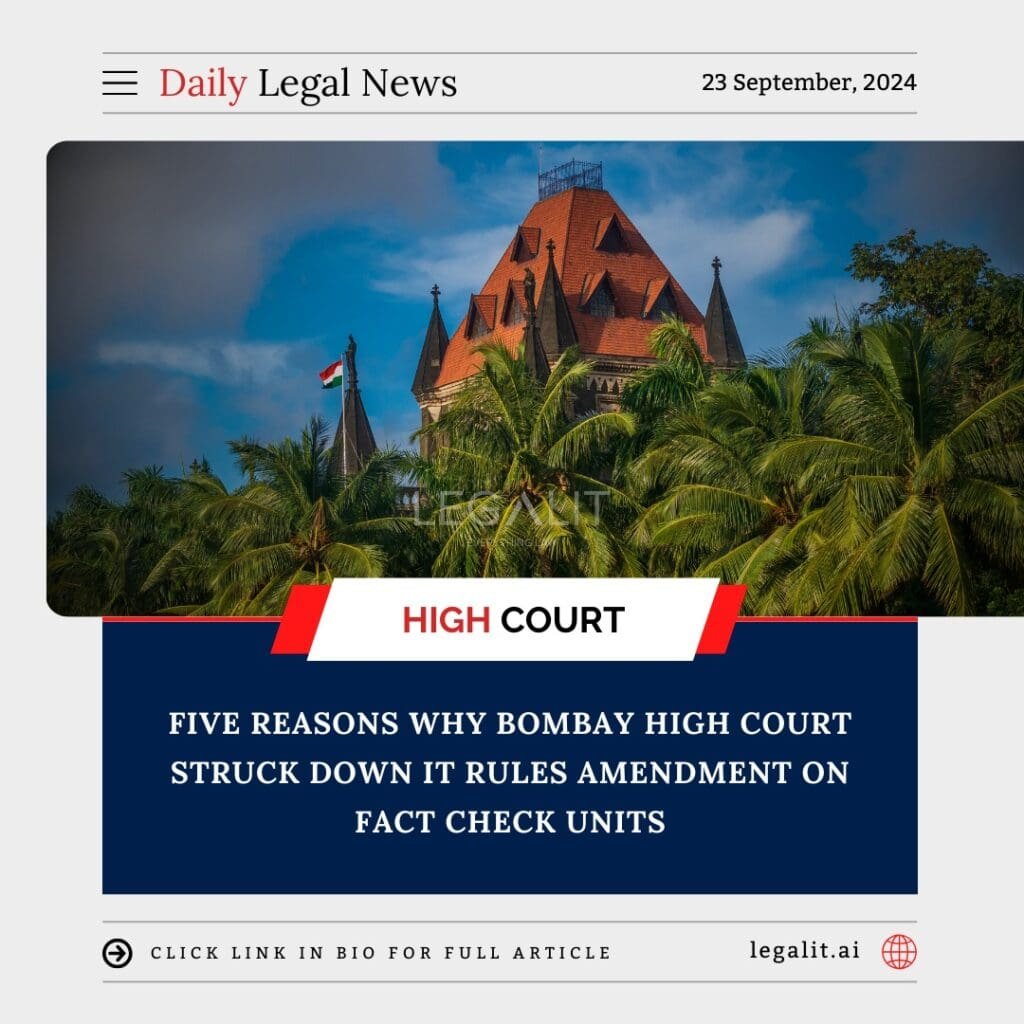
The Bombay High Court recently struck down the Information Technology (Intermediary Guidelines and Digital Media Ethics Code) Amendment Rules, 2023, specifically the provisions concerning the establishment of Fact Check Units (FCUs) for regulating online content. The Court found that these amendments posed significant constitutional challenges, particularly regarding freedom of speech and government overreach. Below are the five key reasons why the Bombay High Court deemed the amendments unconstitutional:
1. Violation of Freedom of Speech and Expression
The court primarily struck down the IT Rules Amendment because it found that the Fact Check Units (FCUs) threatened the fundamental right to freedom of speech and expression, protected under Article 19(1)(a) of the Indian Constitution. By granting the government unchecked authority to decide what constitutes “false or misleading” information about government-related content, the amendment enabled content censorship that could stifle free speech.
The judges noted that the broad and vague nature of the amendments could lead to arbitrary censorship, suppressing legitimate criticism or dissent against the government. The court emphasized that free expression, especially in the digital realm, should not be curtailed through such opaque mechanisms.
2. Absence of Judicial or Independent Oversight
Another crucial reason for the court’s decision was the lack of judicial or independent oversight in the operation of the Fact Check Units. The court found it problematic that the government itself would set up these units and act as the sole arbiter of truth, with no external body to check potential misuse of power.
The absence of an independent review process before content takedowns or fact-checking decisions raised concerns about conflict of interest and potential bias, especially when government-related content was involved.
3. Vagueness and Overbreadth of the Rules
The court was also concerned about the vague language used in the amendments, particularly regarding what constituted “false, misleading, or fake” content about the government. The rules did not define clear parameters or guidelines for determining what information would fall under the Fact Check Unit’s scrutiny, leaving the door open for broad interpretation.
Such vagueness could lead to excessive censorship of content that is not necessarily harmful but could be subjectively interpreted as problematic by the government. The court highlighted that laws that impact fundamental rights must be precise and clear to avoid arbitrary enforcement.
4. Chilling Effect on Journalism and Public Debate
The Bombay High Court was mindful of the chilling effect the rules could have on journalism and public debate. The court noted that giving government-controlled Fact Check Units the authority to flag and take down content related to the government could discourage media outlets, journalists, and social media users from publishing content critical of the government.
This could lead to self-censorship, where individuals and media entities may avoid discussing controversial or sensitive issues out of fear of being flagged or penalized by the FCUs. Such an environment would be detrimental to democratic discourse and the press’s role as a watchdog of government activities.
5. Lack of Proportionality
The principle of proportionality is a key element in determining whether restrictions on fundamental rights, such as freedom of speech, are justified. The court found that the IT Rules Amendment did not meet this standard. While regulating misinformation is a legitimate objective, the court found that the *means employed—i.e., government-controlled Fact Check Units with unchecked powers—were *disproportionate to the goal of combating fake news.
The court argued that there were less restrictive alternatives available to tackle the spread of misinformation, such as collaborating with independent fact-checking organizations or ensuring that judicial or quasi-judicial bodies have a say in content moderation, rather than giving the government unilateral powers.
In conclusion, the Bombay High Court struck down the Fact Check Unit provisions of the IT Rules Amendment because they violated the freedom of speech, lacked judicial oversight, were vague and overbroad, posed a chilling effect on journalism, and failed the test of proportionality. The ruling reflects the judiciary’s commitment to protecting fundamental rights in the face of laws that could potentially infringe on free expression and democratic discourse.